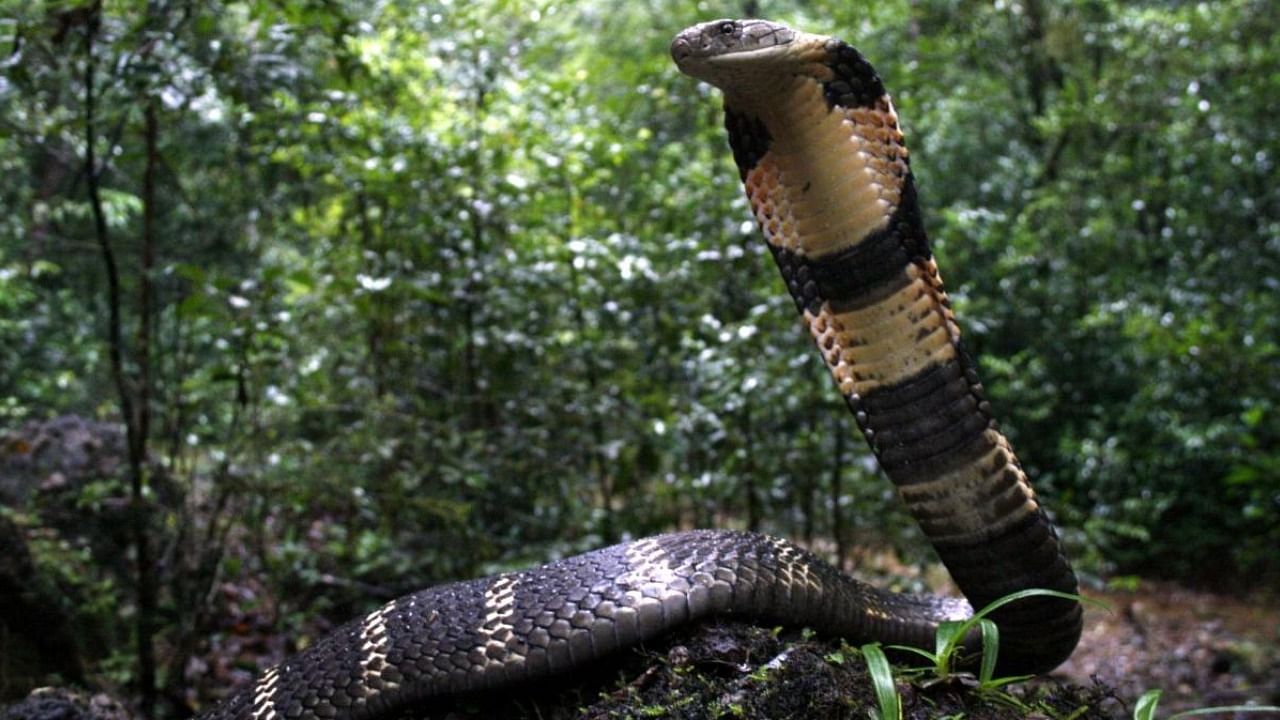
The King Cobra, viewed for nearly two hundred years as a single species found in forests from India to the Philippines, actually belongs to four distinct species, an international team including researchers from IISc Bengaluru has found using sophisticated genetic tools.
The scientists say their discovery would not only help improve the conservation efforts to protect the iconic snake but may also lead to the development of better quality anti-venom formulations in future.
The four King Cobra lineages are found (1) in the Western Ghats (2) in forests extending from the Himalayan foothills and Eastern Ghats to China and southeast Asia, with isolated populations in the Andaman island (3) in peninsular Malaysia across the Greater Sunda Islands (Sumatra, Java, Borneo), southeast to Bali and northeast to Mindoro island in the Philippines and (4) in Luzon island in the Philippines.
"The divided distribution of the four species would mean the need to have different conservation strategies. For instance the species found in Philippines island has higher vulnerability and requires better conservation efforts,” P Gowri Shankar, lead author of the study and a researcher at the Indian Institute of Science told DH.
The King Cobra (Ophiophagus hannah) was first reported in 1836 by Danish naturalist Theodore Edward Cantor who described four such specimens, three captured in the Sundarbans and one in the vicinity of Kolkata.
Since the last 185 years, scientists considered it as a single species until genetic studies by Shankar and his coworkers showed that the snakes were clustered into four different species. The team also includes researchers from the UK, Sweden, Malaysia and several Indian institutions including Chennai Snake Park.
The reptile’s evolutionary history showed how the dry arid regions of peninsular India kept two lineages found in the Western Ghats and Eastern Ghats separated. As a result, the Western Ghat species remains restricted to a limited geographical area whereas the one in the east has been found in the Himalayan foothills, China and other parts of Asia.
"Morphology doesn’t always tell the complete story. The King Cobra species with larger ranges may have lower risks than the snakes found in the Western Ghats and Luzon islands and these two should have greater conservation priority” said Kartik Shanker, a team member and IISc professor.
“Our study has helped uncover species diversity in one of the most iconic animals of the world – the King Cobra. It is currently listed as Vulnerable in the Red List (IUCN, 2012), which is largely influenced by its large geographical range. The study suggests the need for a revision of their threat status,” the team reported in a recent issue of the journal Molecular Phylogenetics and Evolution.
In the last two decades, genetic studies helped recognise similar species diversity in the case of West African Forest Elephant; a new lineage of Kiwi in New Zealand; Sunda clouded leopard in Indonesia; Tapanuli Orangutan in northern Sumatra and the recent case of Indus river dolphins.
Check out latest videos from DH:
